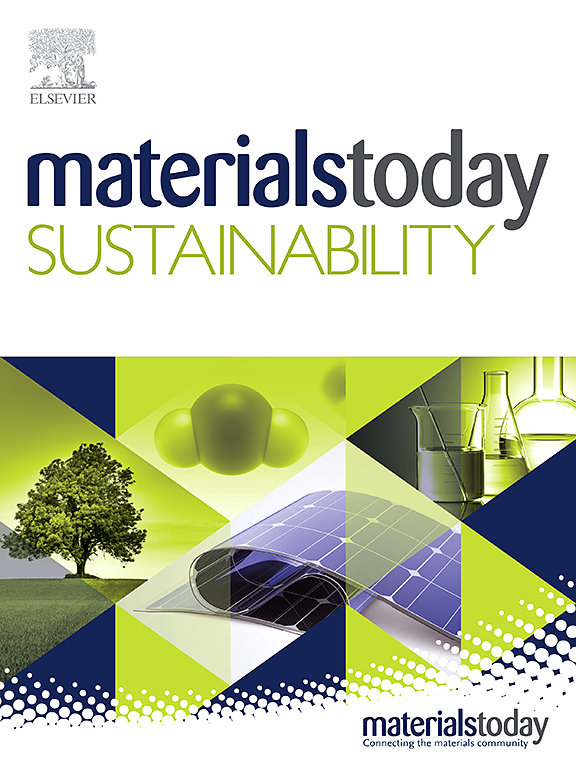Optimising slow pyrolysis parameters to enhance biochar European hazelnut shell as a biobased asphalt modifier
IF 7.1
3区 材料科学
Q1 GREEN & SUSTAINABLE SCIENCE & TECHNOLOGY
引用次数: 0
Abstract
This paper evaluated the impact of operational conditions during slow pyrolysis on the physicochemical and antioxidant properties of biochar derived from European hazelnut shells (BH), with the aim of assessing its potential as a modifier for asphalt binder. The study employed a 22 factorial design with a central point, using pyrolysis temperature (300 °C, 425 °C, and 550 °C) and residence time (1, 2, and 3 h) as study factors to produce BH. Firstly, the chemical, physical and antioxidant properties of European hazelnut shell (HS) and BH samples were compared in terms of their chemical composition, microscopic-morphology, and antioxidant capacity. Additionally, the thermal behaviour of HS was analysed. Asphalt binders were blended with 5% biochar (w/w) to assess particle distribution using confocal laser microscopy. Functional groups were also evaluated through Fourier-transform infrared spectroscopy (FT-IR) and X-ray photoelectron spectroscopy (XPS). The results conclude that the operational conditions of slow pyrolysis significantly affect the chemical composition of biochar from European hazelnut shells, influencing the functional groups present on the asphalt surface. These conditions also influence the microstructure, increasing porosity and rugosity at higher temperatures and longer residence times. HS exhibited high antioxidant capacity, retaining up to 40% of it in the biochar when pyrolyzed at 300 °C for 1 h. Confocal laser microscopy showed uniform distribution of biochar in the asphalt binder. FT-IR and XPS tests revealed chemical interactions between the biochar and binder, characterized by bonds involving C, O, and H, particularly in biochar pyrolyzed at 300 °C and 550 °C for 1 h. The results of this study demonstrate that biochar derived from the slow pyrolysis of European hazelnut shell has the potential to be used as a bio-additive for the development of more sustainable asphalt roads.
求助全文
约1分钟内获得全文
求助全文
来源期刊

Materials Today Sustainability
Multiple-
CiteScore
5.80
自引率
6.40%
发文量
174
审稿时长
32 days
期刊介绍:
Materials Today Sustainability is a multi-disciplinary journal covering all aspects of sustainability through materials science.
With a rapidly increasing population with growing demands, materials science has emerged as a critical discipline toward protecting of the environment and ensuring the long term survival of future generations.
 求助内容:
求助内容: 应助结果提醒方式:
应助结果提醒方式:


